What is going on down in Canberra? The Raiders, even more than usual, are impenetrable. They’re the most confusing team in the NRL, unquestionably good but also inexplicably so.
They win games, but they’re not really good at anything. They’ve got lots of decent players but no superstars.
Their coach, Ricky Stuart, has been there for a million years and is on the brink of a fourth finals appearance in five years – including a Grand Final in 2019 – but there’s no such thing as Stickyball.
That’s highly unusual for a coach who has been at one club for so long: as a thought experiment, imagine how Trent Robinson, Craig Bellamy or Ivan Cleary set up their teams, then think about what a Ricky Stuart team does. It’s hard to put your finger on.
Instead, it’s more of a feeling, an ineffable quality that both Stuart and his teams have. Raiders football is more about heart, commitment and dig than it is about anything to do with how they attack or defend. It’s intangible.
As a club, they are permanent outsiders. As a team, they are chameleons, with no discernable playing style at all but catching every punch that is thrown at them. As a playing group, their mentality goes beyond siege. T
But those three aspects can be rolled back and picked apart, with the goal of working out what is actually going on in the capital.
First up, the basics. Canberra are fifth, with 12 wins and eight defeats, putting them level with Melbourne and ahead of the Sharks, Bunnies, Eels and Cowboys (all 11 wins) and the Knights (ten) in the finals race.
Indeed, if they defeat Melbourne in Melbourne this weekend – and Canberra always defeat Melbourne in Melbourne – then they’ll be in the top four. They’re good, right?
Well…no. They have a massively negative points difference, -74, which puts the Raiders down between the Titans and Dolphins on differential. They’re yet to win a game by more than ten points all year and have been thrashed on several occasions.
Every game is a panic-ridden, seat-of-the-pants rollercoaster ride that invariably sees Canberra come out on top. Only one of their defeats has been close – a Golden Point loss in Auckland – and all of their wins have been tight.
According to The Roar’s proprietary statistical model, they are the luckiest team in the NRL, but lucky to the point where it really doesn’t seem that lucky anymore. Models exist to identify outliers, and the Raiders are certainly that.
By whatever measure you like to use, Canberra should be rubbish. They’re bottom five for run metres, line breaks, total sets and tries scored and conceded. Still: top five in the comp.
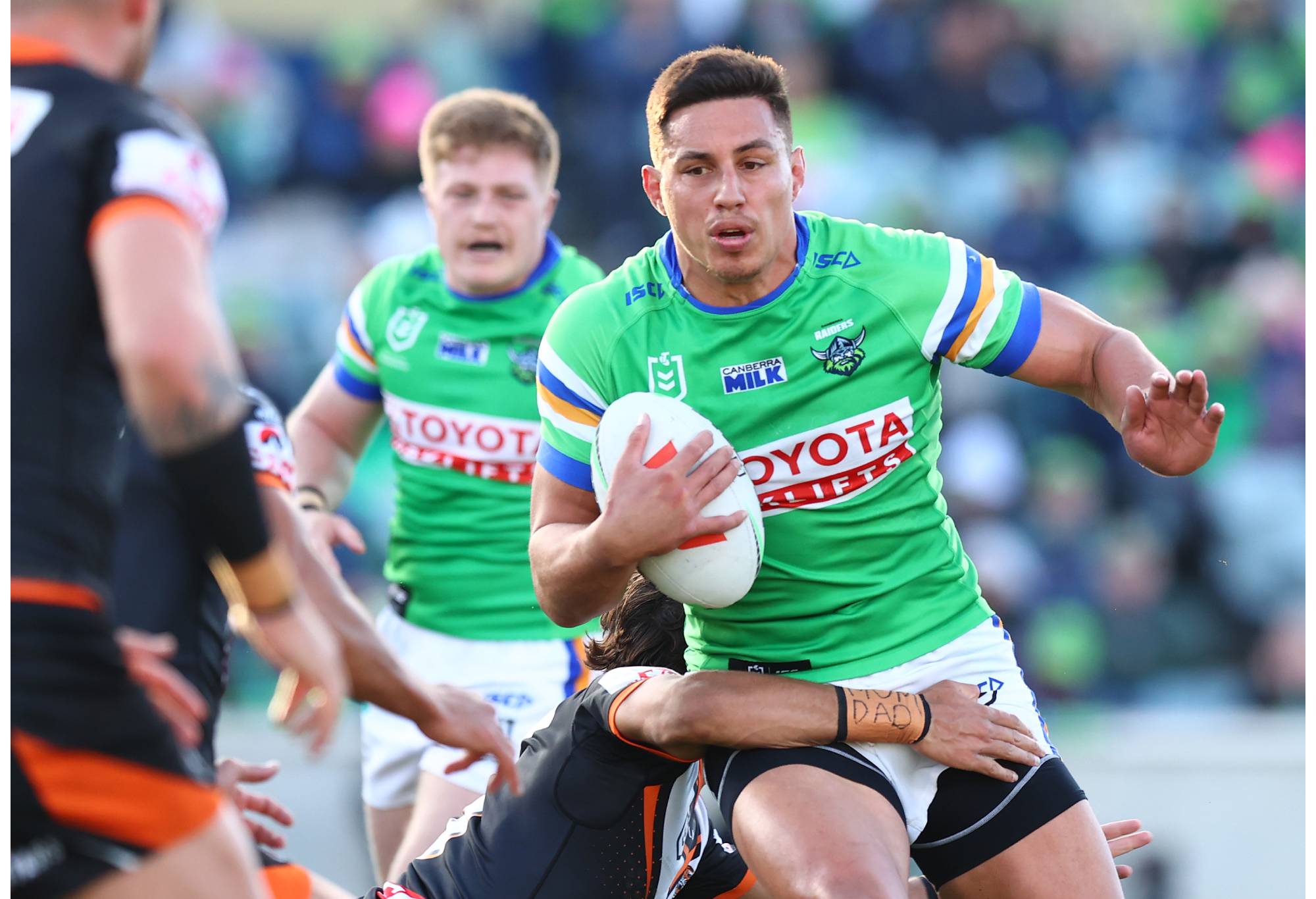
Joseph Tapine. (Photo by Mark Nolan/Getty Images)
Canberra is the land that stats forgot
Canberra are resistant to any form of statistical analysis – though if you’d like some, friend of the column Rugby League Eye Test has done it all here – and the numbers can only tell you so much.
They’re incredibly smart in recruitment, and do use plenty of data in that regard, with Joel Carbone, their list manager, coming from a strong statistical background.
But in terms of the first grade side, they don’t even have a data analyst. It’s hard to contact 17 clubs and ascertain completely who does what in the box on gameday, but it’s a fair bet to say that Canberra are the only NRL team without such a person.
It seems counterintuitive for a team that has so clearly articulated what it wants in a player via data to then not have someone on that task on gameday, but in the weird world of the Raiders, it makes perfect sense.
Sticky is, of course, incredibly experienced as a coach and predates data analysis. He’s used to not having it. He’s also sat next to Michael Maguire, himself somewhat of the old school in these areas.
As much as Stuart presents himself as being something of an iconoclastic dictator, taking potshots from his press conference parapet at an uncaring Sydney media, if you ask anyone who knows him and his way of working, he’s nothing at all like that when it comes to soliciting advice.
Ricky knows exactly what he doesn’t know, and surrounds himself with the sort of people who will tell him when he’s wrong and can give insights that are useable. He might be a dictator, but more in the Soviet sense, with a Politburo of experts whom he trusts and will listen to.
The Sticky character, the one who appears on TV screens, is perfect for the mentality aspect of coaching that Canberra want to cultivate and grow.
Plenty of writers have compared Stuart to football manager/wind-up merchant/professional antagonist Jose Mourinho before, and it remains apt: the way he has built togetherness for decades has been an us-against-the-world siege mentality.
It’s hard to say that it hasn’t worked, because Canberra are one of the mentally toughest teams around, a major contributor to their rake of close victories.
With Ricky, if you’re in, you’re in and if you’re out, you’re out. It attracts a certain type of character, and thus results in a certain type of team.
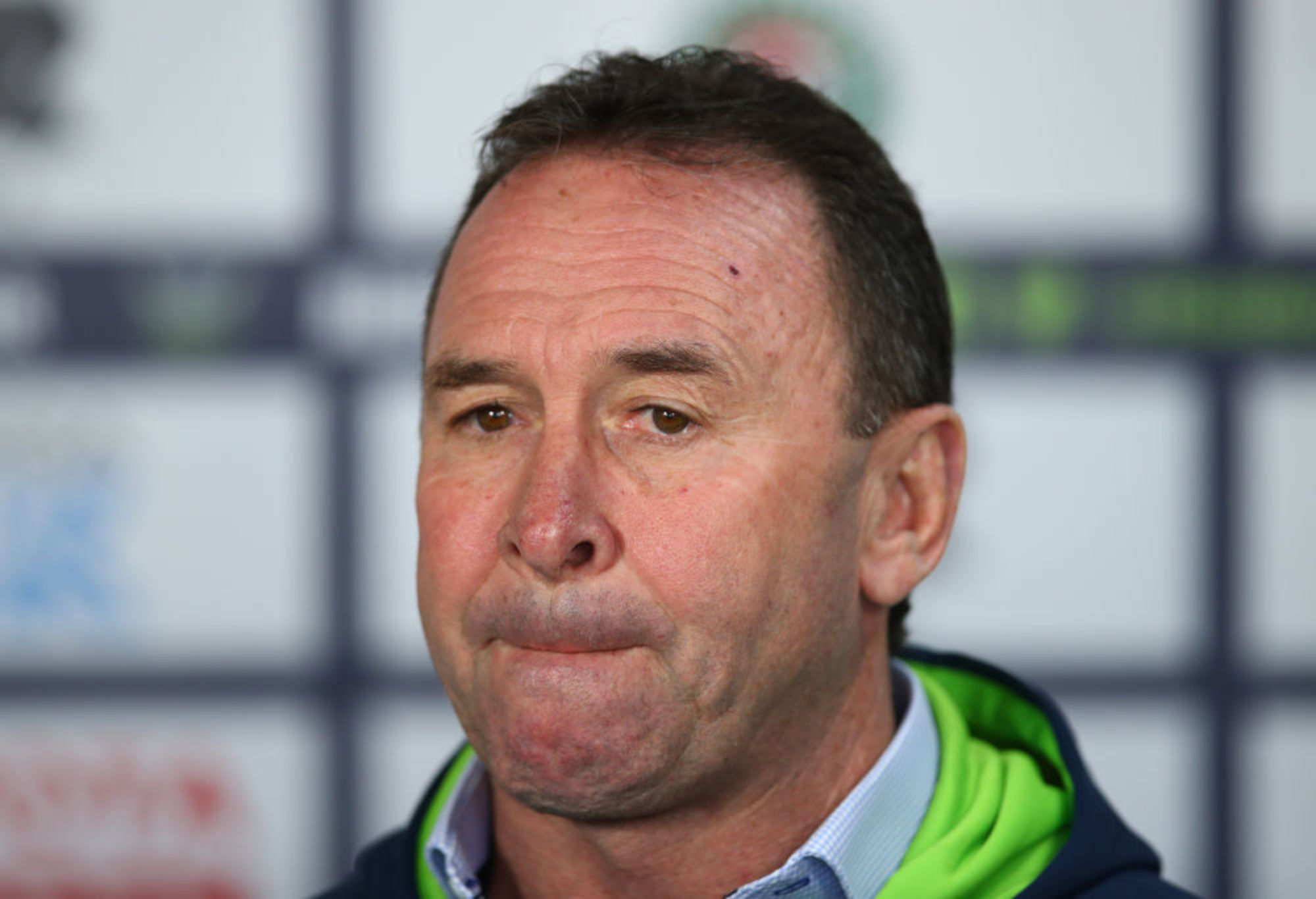
CANBERRA, AUSTRALIA – AUGUST 27: Raiders coach Ricky Stuart is interviewed ahead of the round 24 NRL match between the Canberra Raiders and the Manly Sea Eagles at GIO Stadium on August 27, 2022 in Canberra, Australia. (Photo by Jason McCawley/Getty Images)
The game state masters
The stats can give one insight, because as far as game state is concerned, the Raiders are elite.
Though their end differential is negative, their control of margin is exceptional. League Eye Test’s data on this confirms as much, with net margin being positive until past the 70th minute across the season, showing how good they are at getting a lead and keeping it.
It’s ironic, given that this is the Canberra Faders we are talking about, but Ricky’s Raiders have gone from the side that threw away leads into one of the best at keeping one.
The mentality aspect plays into this, because this side have won and lost together, us against the world, for a long time. They know what they’re doing.
Game state is vital in rugby league – for a whole column on it, click here – because the bulk of games, result wise, are settled at the 60th minute.
Just shy of 25% of results differ from where they were after an hour, and taking out games that were tied at that stage, it jumps to 90%. Teams that get ahead are highly likely to stay ahead, even when the margin is tight.
This goes a long way to explaining the statistical imbalance with the Raiders. If you are leading with 20 to go, you can shut up shop, playing very conservatively. As stats are taken across 80 minutes, that might result in you losing all the major categories, but winning the match.
This time-based data is incredibly hard to dig out, but one suspects that 60 minute cut-off would see Canberra leap up the leaderboard for metres, line breaks et al.
To quote the piece linked above: “In 60% of games, the overall win probability of the team that was ahead either increases or stays the same, regardless of the various indicators moving closer individually, and we know that the reality of winning is even more likely than the statistical model suggests it should be.”
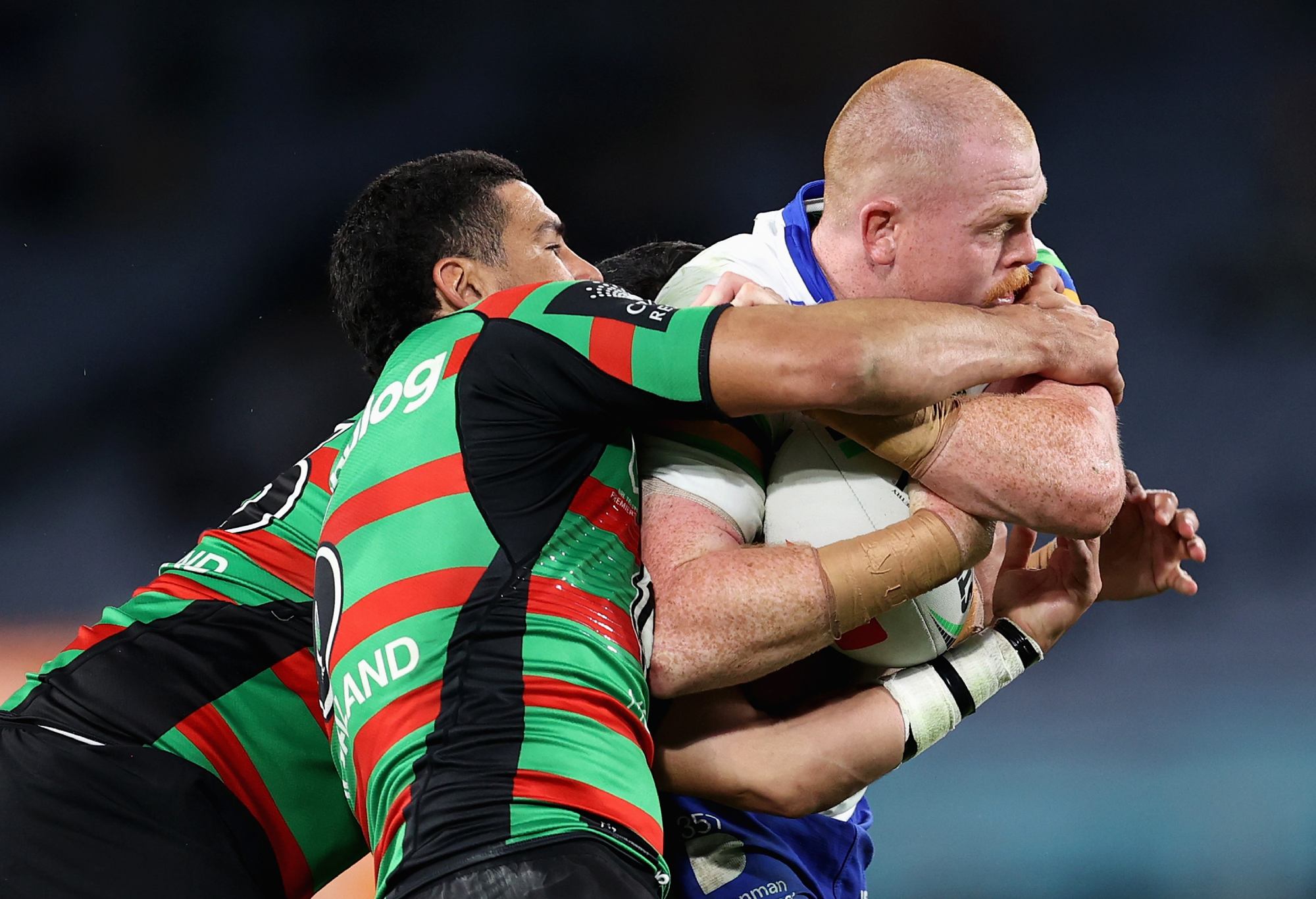
Corey Horsburgh. (Photo by Brendon Thorne/Getty Images)
How do the Raiders think they win games?
It’s with this thought in mind that we should consider how the Raiders actually approach games.
As mentioned, they don’t have a data analyst, so all the proprietary metrics that other teams use to track their own successes – push supports at Brisbane and Cronulla, for example – really don’t apply here. Canberra aren’t doing that.
What they do have is a huge emphasis on video and a wealth of experience that they can call upon to take information and distill it for their players.
There’s Mick Crawley, who has been alongside Ricky for a million years, and Madge, easily the NRL’s most experienced assistant given that he’s won Premierships on both sides of the world and is the current Kiwis coach.
Canberra also have one of the most experienced squads, with their regular best 17 including Jarrod Croker, Elliott Whitehead, Jack Wighton, Jordan Rapana and Josh Papalii over the age of 30 and Jamal Fogarty and Joseph Tapine at 29.
Beyond that, they also have very few notably young players: of their most commonly-fielded 17, only Albert Hopoate (22) and Ata Mariota (21) are under 23 years of age.
The average age of an NRL squad is 25.8 and the Raiders are comfortably above that, with the sixth oldest squad in the comp, a number that would in all likelihood rise if it only factored in the regular 17 that made the field. Only the Dolphins and Warriors give as much game time to veterans.
When you have an experienced backroom staff feeding information to an experienced playing group and a clear way of showing what an opposition are going to do, then you are best prepared to win every game.
Put the Raiders in against the worst team in the comp, and they’ll look terrible (but win anyway): in two games against the Wests Tigers, they’ve won by one point and four points. They’ve struggled against the Dragons and Bulldogs and Dolphins.
Against the best, they’ve nullified their threats.
Souths average nearly six line breaks a game, but got just four against the Raiders and lost. The Sharks average six but got only three in their trip to Canberra and lost.
Parramatta topped 2000m with ball in hand for seven out of eight games in their midseason hot streak, but Canberra kept them to 500m fewer than that and, of course, won. The Eels are NRL’s top offloaders – except against Canberra, who had them at half their regular total.
The Broncos are on almost 10m per run in 2023, but the Raiders kept them to 8.69. Guess who won? Turning up with a plan and then ruining your opposition’s day is what Canberra are all about.
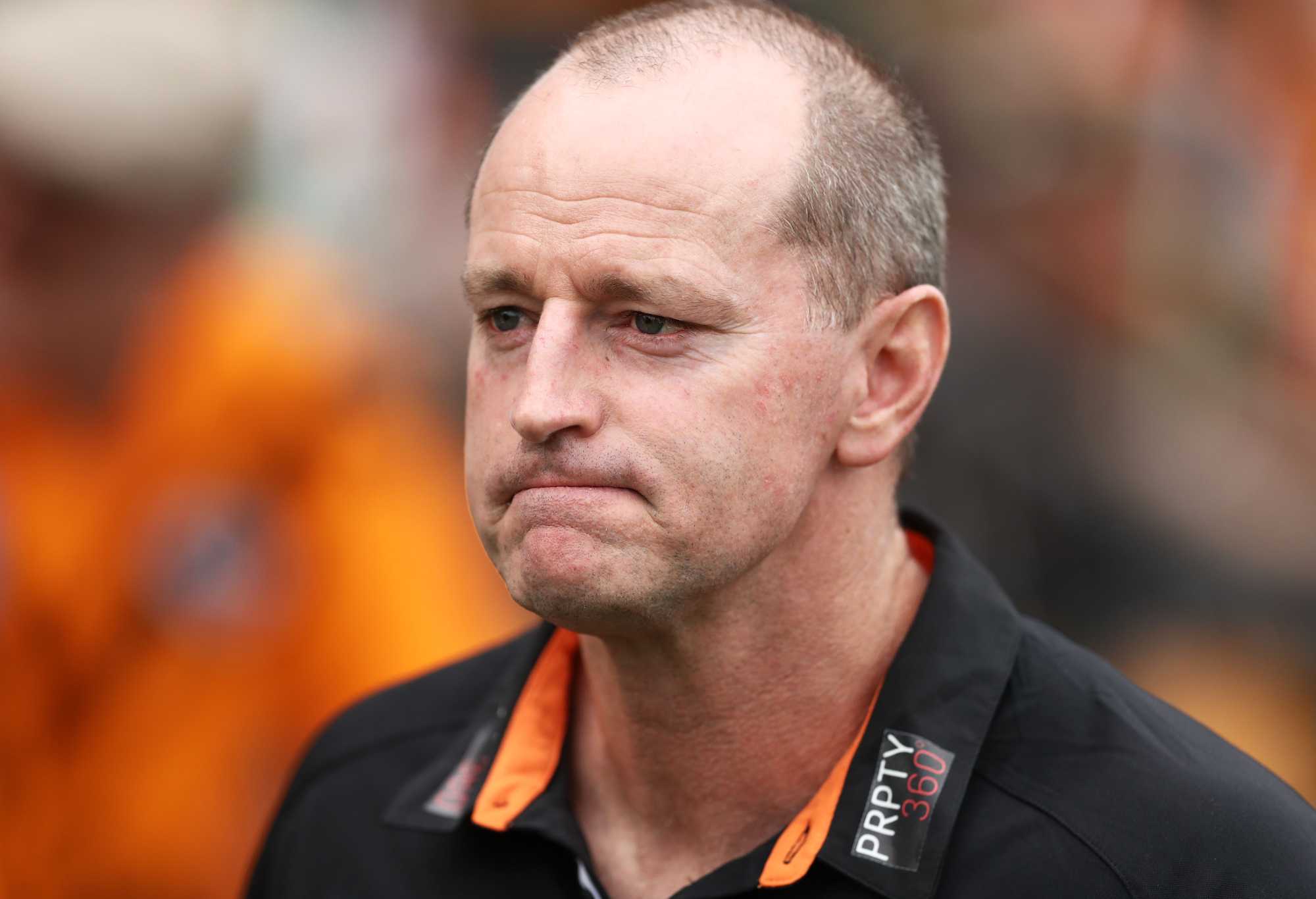
(Photo by Matt King/Getty Images)
Video nasties
It’s a testament to their coaching staff, and their head coach’s ability to listen to his staff, that Canberra are so incredibly good at playing the team in front of them.
Though they lack any real consistent style of their own, the Raiders might be the league’s best at shutting down whoever they are up against, disarming their best weapons and then making it count.
With the ball, it’s a lot more pedestrian, but there is a plan, albeit a relatively simple one.
The Raiders’ try distribution tells a tale. They have Matt Timoko, their only real strike player in the backs, on 9 with Rapana (9), followed by Hopoate, the other winger, and backrower Hudson Young on 8. Wighton and fullback Seb Kris have 7 each but it’s a huge drop thereafter to Fogarty, Whitehead and Corey Horsburgh on three each.
This is unusual, because most teams have a clear way that they think tries are generated and then work towards that: take the Sharks, a very consistent attack in how they try to score and attack to the corners, or the Knights, who look to get their fullback involved as their playmaker.
In good ball, Canberra play slowly, hit lead runners, sometimes Wighton tries a dart and then they wait for the kick. It looks quite clueless a lot of the time.
The Raiders are second last in line engaged runs – behind Manly, for whom Josh Schuster never runs at all – which would suggest that the halves aren’t doing anything special with the footy creatively.
But though Fogarty has just three line break assists with the ball all year – fewer than middle forwards like Junior Paulo, Tino Fa’asuamaleaui and Isaac Lui – but he has a massive eleven kick try assists, not including his own three tries, all of which were off kicks.
As plans go, give it to Jamal and let chaos reign is one that is clearly working for the Raiders. They have scored 68 tries so far, 14 of which have been assisted specifically by Fogarty’s boot – a full 20% – and he’s also third in the league for forcing dropouts.
Fun fact: the current leader for kick try assists in the Super League is George Williams. Never let it be said that Canberra don’t know how to recruit a player to a system.
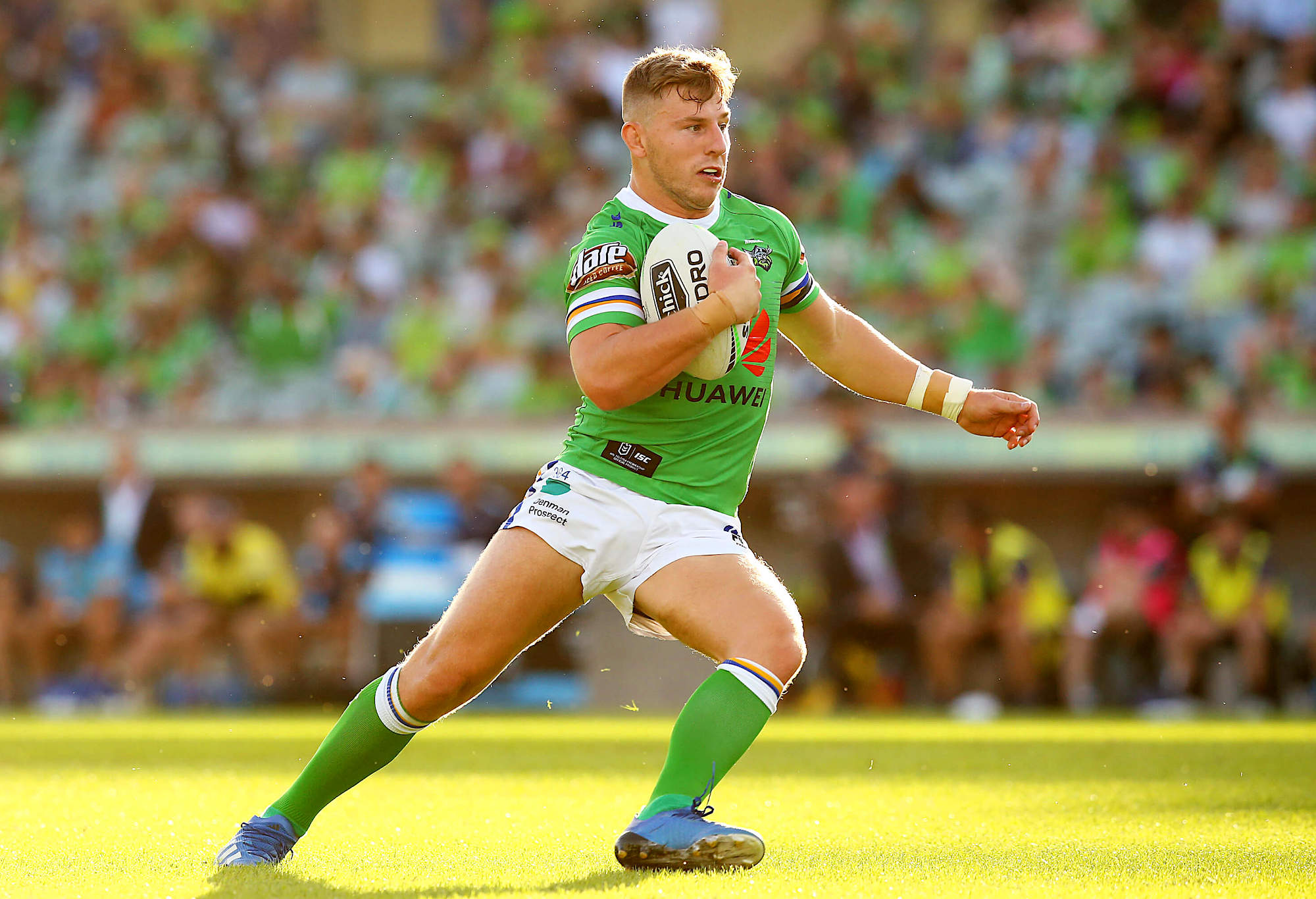
George Williams (Photo by Mark Nolan/Getty Images)
Recruitment with a plan
Recruitment is the third part of the jigsaw. Ricky has built an incredible mentality in the squad, then he and his staff clearly deliver exceptional instructions to the team to prepare them for their opponents.
In terms of getting the cattle, there’s clearly a plan too. Cohesion is highly valued: 9 of the 17 that started in the 2019 Grand Final are still in the squad, and of the other eight places, almost all have been promoted from within.
Only Fogarty, Hopoate, Zac Woolford and Pasami Saulo have come from outside and become permanent members of the first grade rotation. They signed just two players, Saulo and Danny Levi, in the off-season.
The mentality aspect and the recruitment aspect sit side by side: Stuart knows that getting blokes down to Canberra is hard sell, but those that do come will likely be a certain type of personality.
The reputation of Sticky as a tough bloke – and the addition of the NRL’s next most intense figure, Maguire, next to him – makes it clear what life at Canberra will be like, and plenty are put off by it. The colder weather and isolation of Canberra will put off even more.
But that, in its own way, presents a strength. They don’t carry half-hearted players, and those that they do get, they tend to keep for a while. Cohesion is high, team bonding is high. When players step beyond that – as George Williams and John Bateman learned – it rarely lasts long.
When it comes to soft skills, Canberra are exceptional. They know exactly what they want their team to look like, personality wise, and recruit to it. Though the Raiders don’t have a set way of playing, they know exactly what they are doing week to week to give themselves the best chance of winning.
It might not work long term, given the older age profile. It might even be that it is working maximally now, with a bit of luck in there too. But it’s undeniably, with the team sitting on the cusp of the top four, that it is working.
The Canberra chameleons might not be an elite team – but they certainly look like one.

































































































